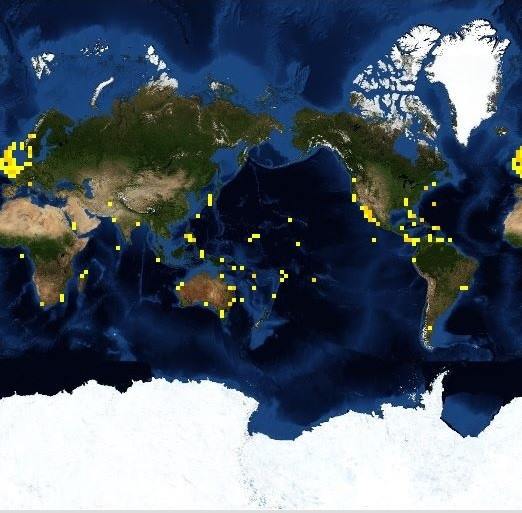Biogeographic Distribution
The global distribution of Elysia sp. is currently unknown, though based on the distribution of similar species it likely has an Indo-Pacific distribution. The sacoglossa are generally quite widespead, though hot spots of endemicity are known to occur in the islands of the Central Pacific, the Indo-Malay triangle and the Caribbean [32,33]. There is a significant decrease in the number of species with increasing distance from the equator, and there are almost no cold-water endemic species [32]. This is almost certainly as a result of their high feeding specificity and need for shallow waters with high light attenuation to be able to utilise their kleptoplastids. The highest number of cold water species are found in areas where numerous different species of Caulerpa algae are found [32]. Many of the more basal groups within the sacoglossa, particularly those that do have partake in functional kleptoplasty, have a close association with Caulerpa, and are therefore likely to occur in high densities in these areas [32].
As most Elysiids are known to uptake chloroplasts from their algal prey and retain them for use in their own tissues, both their biogeographic distribution and their distribution at a local scale are restricted by the constraints of photosynthesis, namely high light attenuation and oxygen levels [1,2]. As such, Elysiids are generally found only in the tropical and sub-tropical waters of the world in near shore areas in shallow, nutrient-rich waters [1,2,32,33]. This is evident in the map shown in Figure 1 below, where the known occurrence of Elysiids is seen to be largely equatorial. Figure 2 below is a slight refinement of Figure 1, showing the known occurrence records for the Elysia genus only.
Both maps below are taken from the Global Biodiversity Information Facility's website. The site has an excellent interactive map that illustrates both the known occurrence of the Elysiidae family and Elysia genus, as well as the occurence records for numerous species within the family.

Figure 1- Map of the global distribution of the Elysiidae, taken from the Global Biodiversity Information Facility's website.

Figure 2- Map of the global distribution of the Elysia genus, taken from the Global Biodiversity Information Facility's website.
|